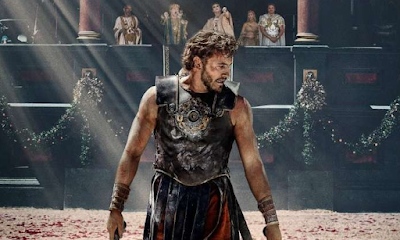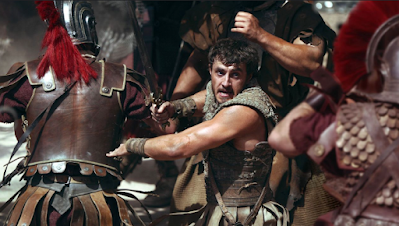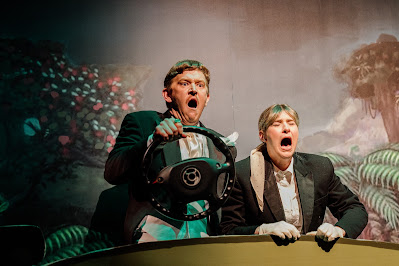A bittersweet memoir of a melancholic woman called Grace Pudel - a hoarder of snails, romance novels, and guinea pigs.
Memoir of a Snail is not your typical animated feature. This dark, deeply melancholic claymation film by Adam Elliot defies the genre's conventions, offering an emotional experience that is raw, unsettling, and profoundly human. It is a story that delves into the depths of despair yet manages to glimmer with the faint light of hope, revealing that even in the bleakest of circumstances, kindness and resilience can endure.
Crafted over eight painstaking years in Melbourne, the film is a testament to Elliot’s dedication and vision. Every prop, character, and set was meticulously hand-sculpted, creating a tangible, textured world that eschews the digital perfection of CGI. The result is a film that feels visceral and alive, with its earthy colour palette of browns and deep reds drawing viewers into Grace’s world of perpetual gloom.
At its heart, Memoir of a Snail is a narrative of immense suffering. Grace, the protagonist, recounts her life’s story to Sylvia, a snail who has been her silent companion for much of her journey. From birth defects and bullying to addiction and abandonment, Grace’s tale is a relentless cascade of tragedy. Yet, Elliot avoids turning her into a caricature of misery. Instead, Grace’s struggles feel painfully authentic, her small joys and moments of connection rendered all the more poignant against the backdrop of her sorrow.
The film’s symbolism is both rich and resonant. Grace’s love for snails, reflected in the antenna-adorned hat she wears throughout the film, serves as a metaphor for her burdens. Like a snail carrying its shell, Grace bears the weight of her emotional and physical traumas, unable to shed them but always inching forward. This idea of forward movement, despite the crushing load of the past, forms the emotional core of the film.
Elliot’s writing balances this heaviness with unexpected moments of humour and humanity. Grace’s eccentricities—her hoarding of snail-themed trinkets, her oddball interactions with others—lend a touch of whimsy to an otherwise grim story. The characters around her, no matter how briefly they appear, are vividly drawn, brimming with quirks that make them memorable.
Yet, this is not a film that shies away from its mature themes. Memoir of a Snail delves into alcoholism, grief, homophobia, and even suicide with unflinching honesty. Its R rating is well-deserved, not only for its thematic content but also for its surprising depictions of nudity and sexuality. These elements, while jarring, feel essential to the film’s authenticity, painting a raw and unvarnished portrait of human frailty.
The animation itself is a triumph. The handcrafted stop-motion, with its meticulous attention to detail, brings a tactile quality to the film that is rarely seen in modern animation. Every frame is infused with care, and the characters’ expressive faces convey a depth of emotion that words often cannot. It is this artistry that elevates the film, allowing it to navigate its heavy subject matter without feeling overly oppressive.
What sets Memoir of a Snail apart is its ability to find beauty in despair. While Grace’s life is a litany of losses and betrayals, the film never succumbs entirely to hopelessness. Acts of kindness, such as the letters from her brother or the support of an elderly neighbour, Pinky, serve as lifelines, reminding viewers of the power of connection.
The film’s resolution, while somewhat sentimental, offers a sense of closure that feels earned. Grace’s journey is not one of dramatic transformation but of quiet endurance. Her ability to keep moving forward, like the snails she admires, becomes a testament to resilience.
Despite its many strengths, Memoir of a Snail is not without flaws. The sheer weight of its tragedies can feel overwhelming, and some viewers may find the onslaught of misfortune excessive. There is also a sense that certain themes, such as the metaphor of the snail’s shell, could have been explored more deeply. Yet, these shortcomings are overshadowed by the film’s emotional resonance and visual brilliance.
For viewers seeking a conventional animated film, this is not the one to watch. But for those willing to embrace its sombre tone and intricate craftsmanship, Memoir of a Snail offers a profoundly moving experience. It is a reminder that even in the darkest corners of life, there is beauty to be found and that hope, however fragile, can persist.
Adam Elliot’s “clayographical” approach—blending autobiographical elements with handcrafted artistry—results in a film that is both intimate and universal. Memoir of a Snail is not merely a story of suffering but of the enduring strength of the human spirit. It is a film that lingers in the mind, its somber beauty and flickers of light refusing to fade.
Memoir of a Snail was released in NZ cinemas on November 7, 2024












_2.jpg)
_3.jpg)
_1.jpg)





.jpg)







.png)


.jpg)



